A vehicle that shakes suddenly can indeed be pretty unsettling for the driver. Although the issue might not seem that severe at first, it can surely get you worried when it happens from time to time. And unlike the typical problems that occur to the vehicle over time, vibration issues can happen to both new and used cars.
But what exactly is causing the vehicle to shake when you hit the pedal? Well, we will get to the bottom of the issue in this discussion on vibration in the gas pedal at 70 mph. And eventually, you will be capable of knowing the root cause and what you need to do. So, stick with us if you want to know it all!
What Explains the Vibration in Gas Pedal at High Speed?
So, when there is a vibration issue with the vehicle, the problem is with the components. Let us get through the common reasons why the car might output this problem to give you a better idea regarding the topic.
Out of Balanced Tires
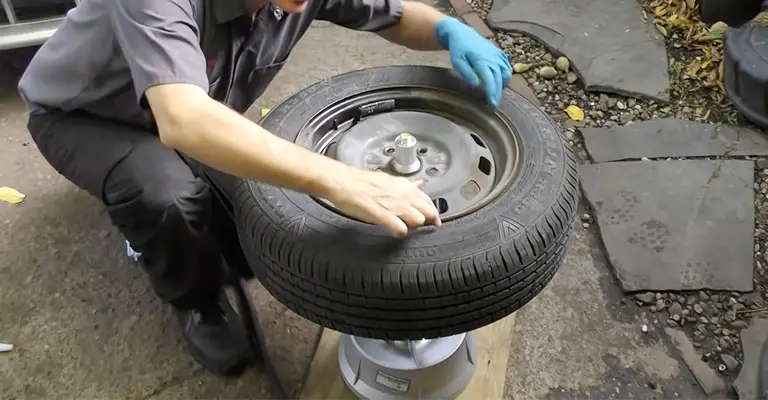
Imbalanced tires can indeed make the vehicle vibrate at higher speeds. Now, when there are issues with the tires, they will have scalloped or cupped wear patterns. And tires with these issues, one of the sections will be heavier than the other.
But what causes the tires to be imbalanced? Hitting potholes or curbs at high speeds and bridge expansion joints are the reasons. When this happens, the wheel weight will get knocked off, and you will generally see a sidewall dent or bubble.
Nonetheless, the damage to the tire will result in vibration when you hit the gas. You will be capable of feeling the shaking on the steering wheel, on the gas pedal, on the floor, or on the seat.
Misaligned Wheels
Another common reason that might explain the vibration you feel on the gas pedal is the misalignment of the wheels. Again, how do the wheels get misaligned? Well, it can be due to hitting a pothole at high speed.
Wheel alignment is basically the angle at which the wheels touch the road. And if the angle is off, the wheels will be misaligned, which can make the vehicle shake when you are at high speed.
Uneven Wear on the Tire
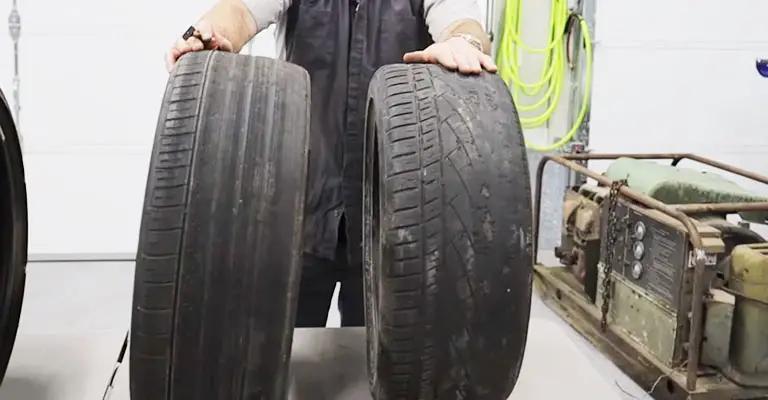
A slipped, or broken belt can cause the tires to bounce or vibrate. And this issue can be present in both new and old cars. The thing is, it highly depends on the quality of the tires. Poor-quality ones will be more likely to wear out sooner than high-quality ones.
But how do you know which tire requires replacement? Well, you will need to drive the vehicle at the speed where the shaking starts. Feel the vibration and determine the source. If it seems complicated to determine the area where the vibration is coming from, there is a high chance that multiple tires will require a replacement.
Wheel Runout
A wheel runout basically refers to tire assembly or any of the wheel components not being perfectly in shape. It is more of a dynamic problem, resulting in wobbling at slow speeds and rattling at a higher speeds.
That said, a flawed out-tire-wheel assembly will generally include broken belts or tires with shifted belts. The best way to determine whether this is the issue or not would be to use a tire runout gauge, dial indicator, or off-car balancer tool. That will let you check the lateral and radial runout of the wheels.
For the radial runout, you will need to check the center of the tire tread. On the other hand, for lateral runout, you should focus on the center of the sidewall. Ensure that you are carrying out the tests on a smooth rib. Otherwise, you will not get the most accurate results.
Faulty Brake System
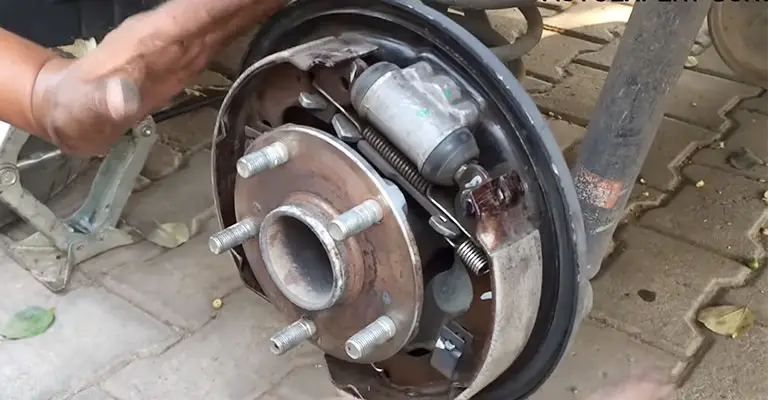
The brake calipers and pads might not provide the right amount of grip, making the brake discs warp over time. When the disc brakes warp up, you will feel the vibration starting from 45 mph to 50 mph. And the shaking will get pretty severe when you hit close to 70 mph.
On that note, if the issue is with the brakes, you will also get a burning odor coming out of the vehicle. And the shaking will become more noticeable when you brake the vehicle after hitting a high speed.
In this case, you will need to consider re-indexing the rotor. The one or two lug positions on the hub will require your attention. Also, ensure that the brake parts are in good shape. If they are damaged or show signs of wearing out, you must get them replaced.
Worn Parts
It is not just the brakes that wear out over time. The story is the same for the other moving parts in your vehicle. These parts include the upper strut bearings, shocks, ball joints, and tie rod ends. And they can certainly contribute to the shaking issues when you hit the gas.
Any wear or damage on these parts will generally come in sight when you carry out a wheel alignment. And if you do find any signs of wear on these parts, you need to get them replaced as soon as possible.
Low Tire Pressure
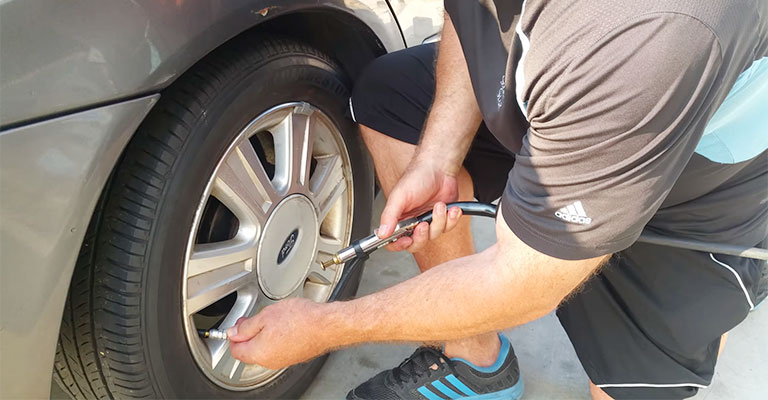
When the tire pressure is less than the optimal rate, you will face tons of issues with the vehicle. These problems include abnormal tire wear, blowouts, poor fuel mileage, and, most importantly, vibrations when the speed is high.
However, the good news is that there is no need to go through too many hassles to detect whether the tire pressure is low or not. You will just need a tire pressure gauge. Check tire pressure and inflate it if you need to.
In cold weather, we recommend raising the tire pressure to 3 PSI above the recommended range. This increase in tire pressure will help a lot in terms of mitigating abnormal tire pressure drops in harsh winters.
Resonance in the Exhaust
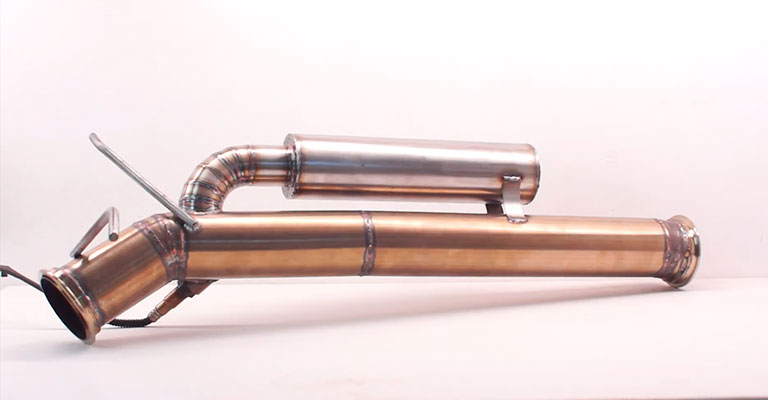
There are many reasons why resonance can occur in the exhaust. For example, it could happen when you change the vehicle’s exhaust system. The issue can also come up for an incorrectly fitted or bent pipe.
However, most drivers will confuse the issue with wheel or gas pedal vibration. At high speeds, the natural fluctuations in the exhaust will stack up and create resonance or a buzz. Likewise, removing tuning weights that drivers typically attach to their vehicles to dampen the drivetrain or chassis vibrations can initiate the issue.
Starved Engine
The engine requires an ample amount of oxygen, spark, and fuel to make the vehicle run smoothly. And if it does not get the needed of these, shaking and jerks will happen on the car at higher speeds.
On that note, when the engine is starved, you will notice the vibrations coming out from the engine compartment. In this case, you should take a look at the spark plugs and consider installing a new set of them if needed.
Additionally, make sure that the air and fuel filters are working properly. If they are clogged, you should get them replaced. They are pretty crucial for the engine to get the right amount of oxygen during the combustion process.
Overworked Powertrain
Generally, an overworked powertrain usually initiates a clicking noise while turning. A faulty CV axle shaft might also make the vehicle shake when you are braking after getting to a certain speed. Excessive wear and overusing of the flywheel, clutch, gearbox, and steering rack will also result in the car shaking.
If you suspect that these are the components behind the vehicle shaking issue, you should get them inspected by a professional mechanic. They will be capable of getting to the bottom of the issue and getting things replaced if needed.
Shabby Suspension Components
Typically, the vibrations will start at the speed range of 50 mph to 75 mph. However, if the shaking starts at a certain speed and starts to get worse, there is a problem with the suspension and differential mounts. They might be worn out.
Depending on the damage that is present on these parts, it might be better to have your vehicle replaced entirely. That will be more economical than changing the differential and suspension components.
Bad CV Joints
The thing is, CV joins are pretty challenging to diagnose. And things get much harder when a rear-wheel drive faces CV joint problems. The issues that are with the inner CV joints will generally occur under heavy load, but they can certainly appear at high speeds.
If the vehicle is shaking at a speed near or over 70 mph and your tires are all good, you should take a look at the CV joints. And if you are unlucky, the powertrain can be the culprit behind the shaking, which will call for expensive repairs and replacements.
What Should You Do When the Vehicle Is Vibrating?
Now that you know the culprits behind the vibration issue, you might be wondering what you should do to get the issue fixed, right? Well, you need to consider these points for the fix:
Tires
Always opt for good-quality tires for your ride. And make sure to properly inspect the tires from time to time. Proper maintenance can help lower the chances of issues such as sudden vibration occurring.
Now, when it comes to replacing your tires, ensure to take the vehicle for a good test ride to see if the tires are actually good for the car or not.
Nonetheless, when it comes to balancing the tire, avoid doing it at home. The process requires a lot of computerized measurements, which you will not be capable of nailing in your home. So, rely on the trusty mechanic for this.
Wheels
If your vehicle wheels are not aligned properly, you will need to get them inspected by a professional mechanic first. Depending on the vehicle, the mechanic might need to carry out the alignment process for all the wheels. It can be just two of the wheels as well. And in this process, they will depend on an alignment machine.
Brakes
You should regularly inspect the brake pads and calipers. And you might not know this, but you generally need to replace the brake parts after every 75000 miles. They generally wear out excessively after that amount of miles.
But for the vehicles that did not hit that amount of miles, carry out proper maintenance after every six months.
Patterns
If your steering wheel is shaking when you are driving at high speeds, there is a high chance that the rotor is warped. You might feel the whole front side shaking if you are riding an FWD (Front Wheel Drive). In that case, one of the inner CV joints needs your attention.
However, when the shaking happens only when you are at high speed, consider taking a look at the wheel bearings. They might be worn out or require a replacement.
Now, if the vibration happens only when you press on the gas, the tie rod, manifold gasket, ball joint, or inner CV joints needs your attention. Inspect them and see if they are in good shape or not.
Tools
Sometimes, the vibration issue can be a symptom of any underlying problem in the vehicle. And you can easily figure it out with an OBD/OBD II scanner. These tools are not expensive, but they can surely help you with costly repairs. Frequently check the vehicle with the device.
Final Words
One thing should be pretty clear when facing vibration in the gas pedal at 70, which is — vibration can occur for many reasons. But as you can see, not all causes require you to go through too many hassles or spend too much money.
Leave a Reply